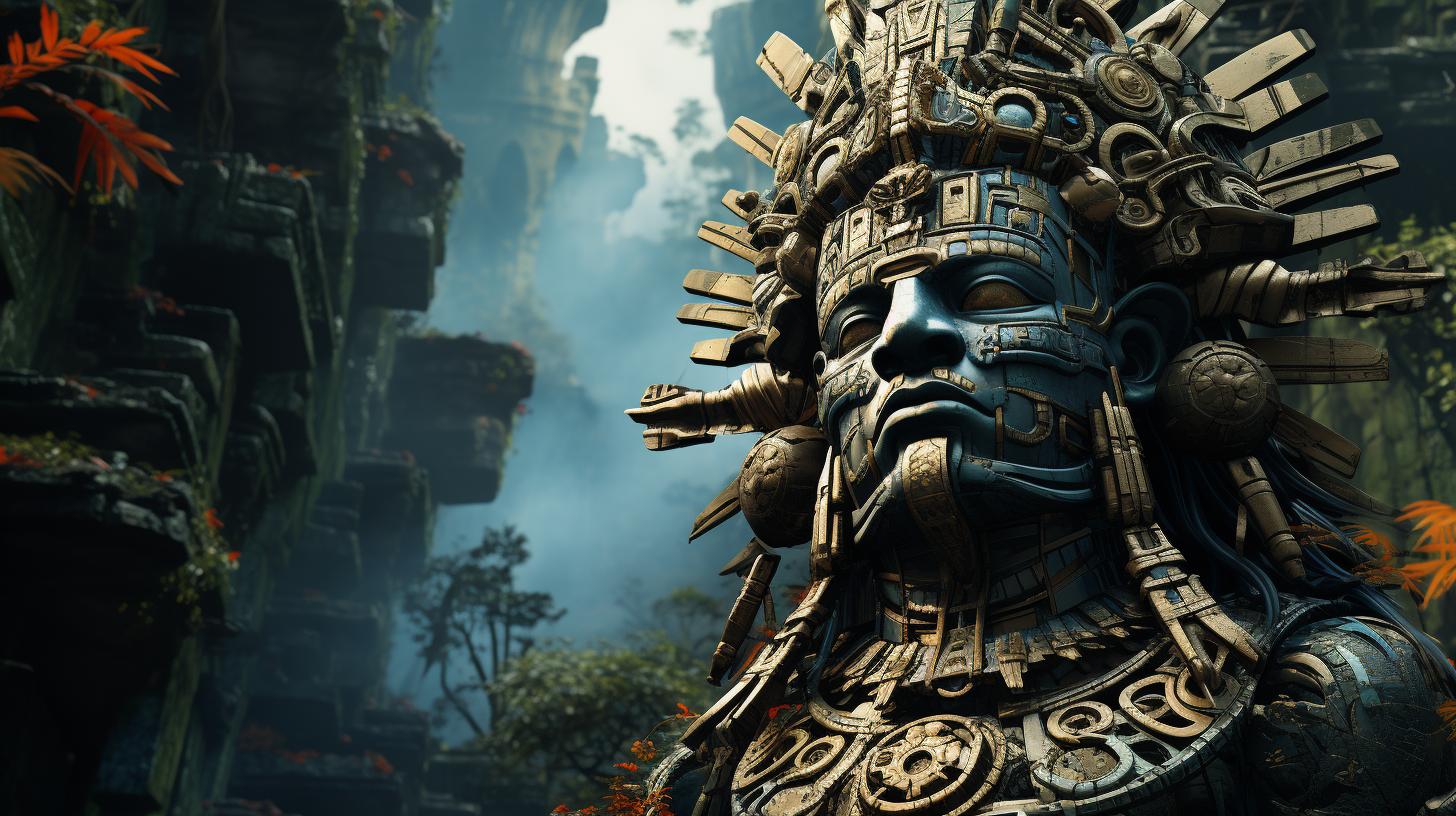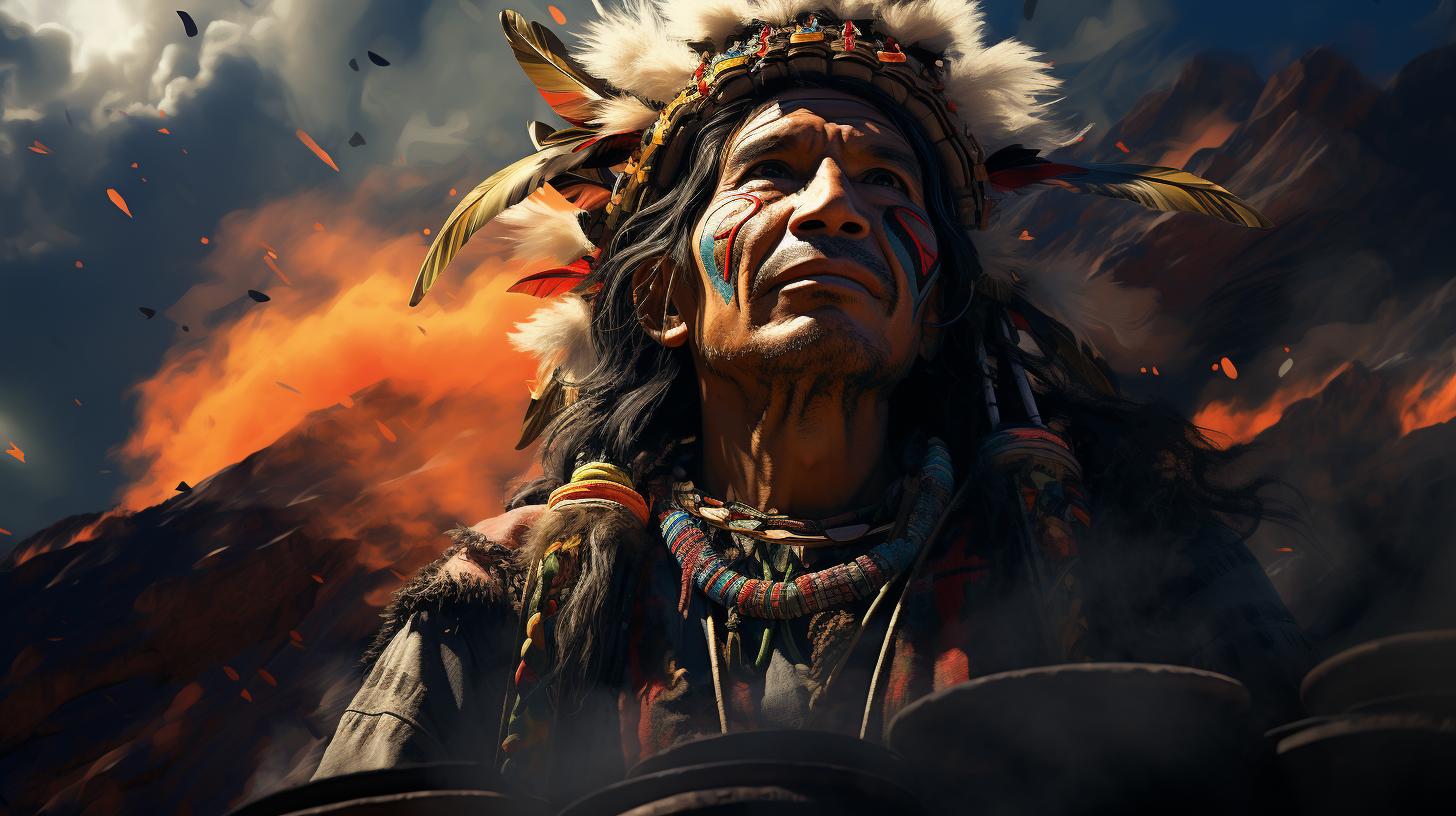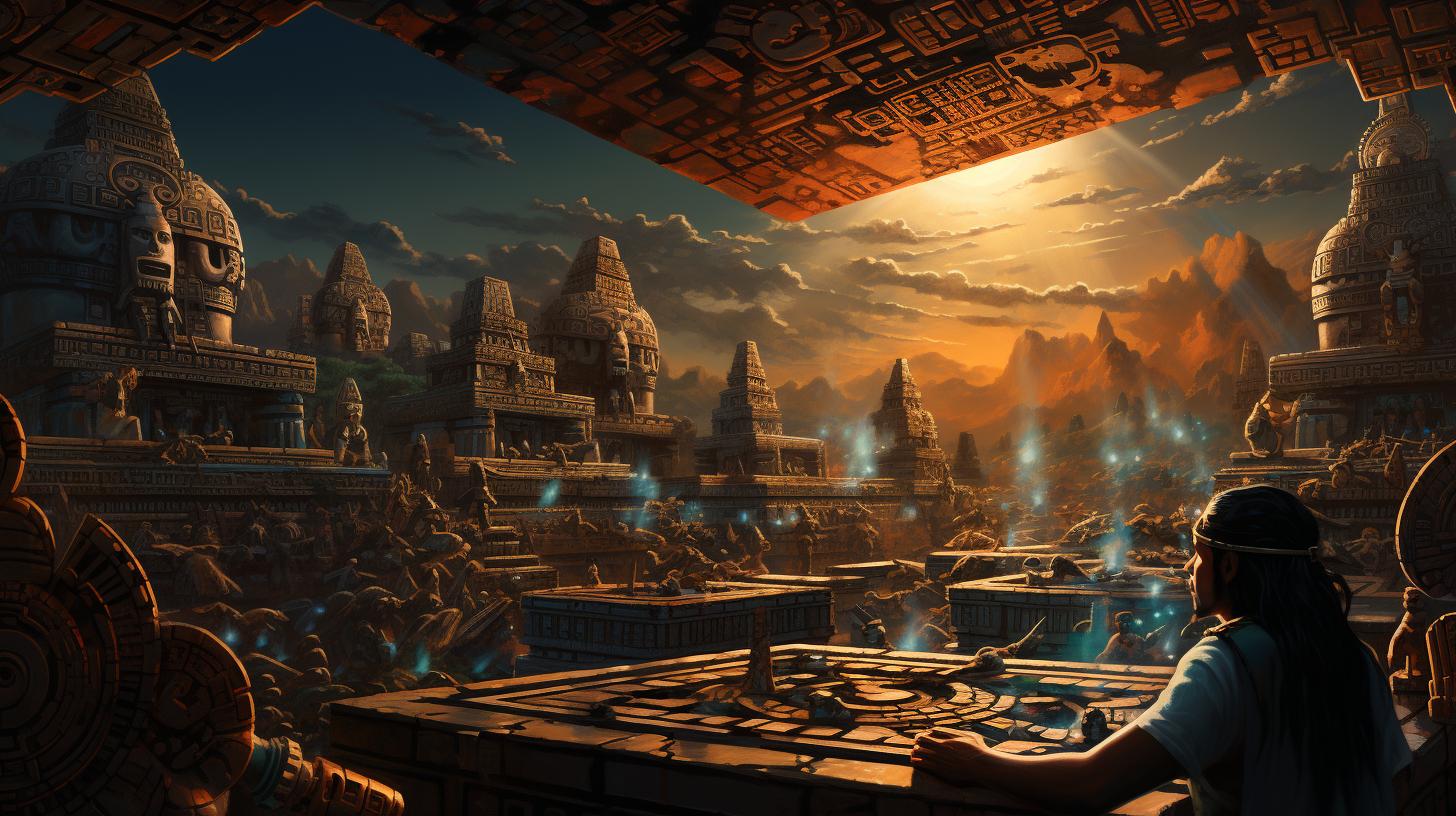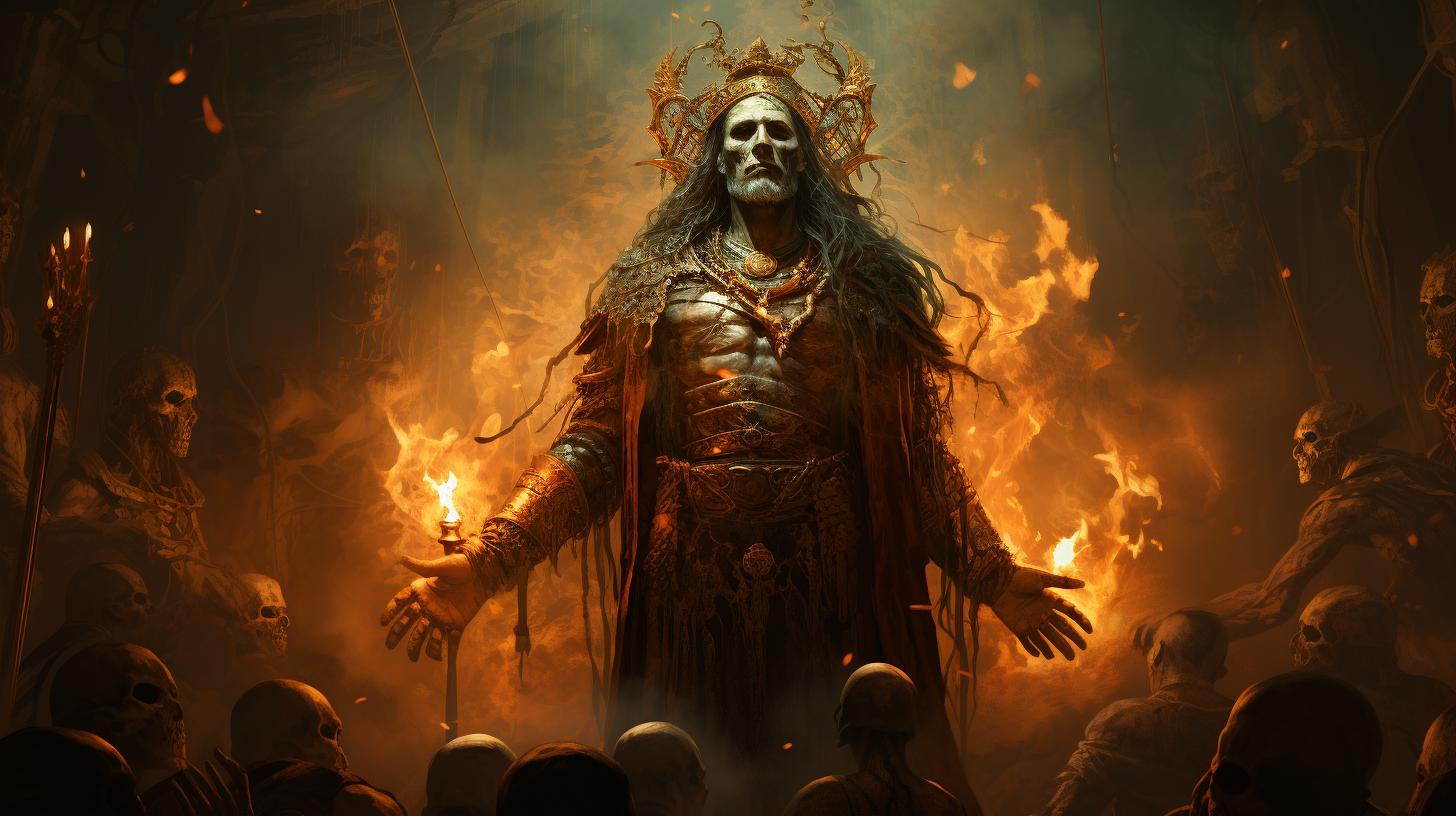Sarapana Inca God
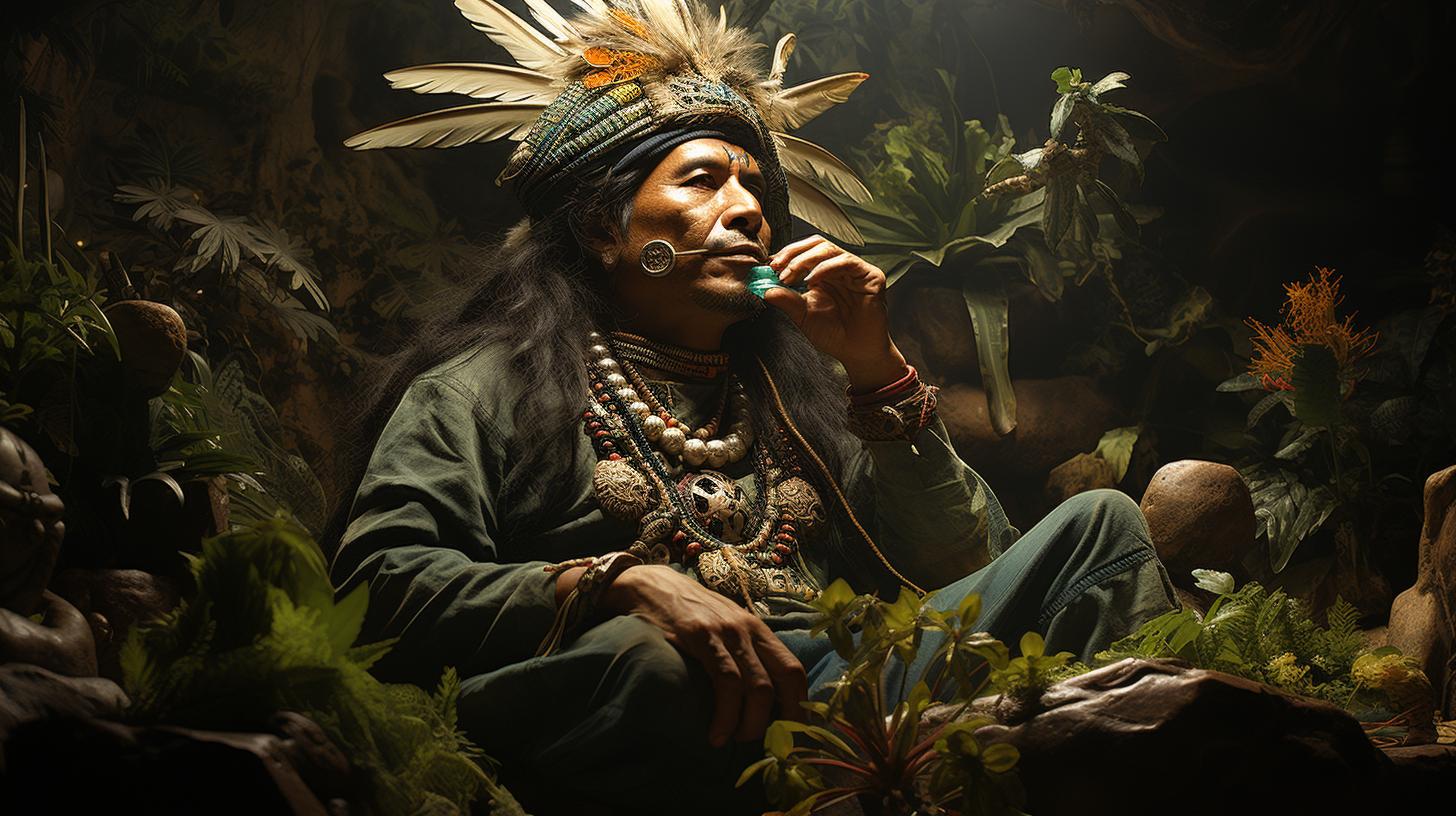
Sarapana, the Inca god of healing, played a significant role in ancient Peruvian culture. Believed to possess the power to cure diseases and provide physical and spiritual healing, Sarapana held a prominent position among the Inca deities.
This article explores Sarapana’s origins, his connection to other Inca gods, the rituals and offerings dedicated to him, and his impact on Inca medicine. Discover the fascinating world of Sarapana and his enduring influence on Peruvian culture.
The Origins of Sarapana
Sarapana, a significant deity in Inca mythology, held a prominent role as the god of healing. His origins trace back to the ancient Inca civilization in Peru, where he was revered for his ability to cure diseases and offer spiritual and physical healing.
Sarapana’s origins are shrouded in myth and legend, with various accounts describing his emergence within the Inca pantheon.
According to one legend, Sarapana was born from the sacred Lake Titicaca, a revered site in Inca culture.
It is said that he emerged from the waters, embodying the healing energies and powers connected to the lake. Another tale suggests that Sarapana was created directly by the supreme Inca god Viracocha, who bestowed upon him the gift of healing.
Sarapana’s role as the god of healing made him an essential figure in Inca society. His presence embodied the Inca belief in the interconnection between physical and spiritual well-being. The ancient Incas believed that Sarapana could bring balance and harmony to both the body and the soul, offering remedies and guidance in times of illness and suffering.
Unlike other Inca gods who were closely associated with natural elements such as the sun or the moon, Sarapana’s origin and powers were deeply rooted in his healing abilities. As the god of healing, Sarapana held a special place within Inca culture, revered for his remarkable powers of restoration and his ability to bring forth health and vitality.
- Legend has it that Sarapana possessed deep knowledge of herbal medicine and various healing techniques, making him a highly regarded figure among the Inca people.
- The origin stories and cultural significance of Sarapana showcase the deep reverence the Incas had for healing and their belief in the vital role it played in their society.
As we delve further into the fascinating world of Sarapana, we will explore his role within Inca society and how his healing powers influenced the spiritual and physical well-being of the ancient Peruvian civilization.
Sarapana as the God of Healing
Sarapana, the revered Inca god, held a crucial role as the deity of healing within the ancient Peruvian culture. Believed to possess extraordinary powers to cure ailments, Sarapana was worshipped and sought for physical and spiritual healing.
In Inca society, Sarapana was highly regarded as the source of protection and restoration from illness and suffering. His divine influence extended beyond mere physical healing, as believers attributed spiritual and emotional well-being to his interventions.
Legend has it that Sarapana possessed the ability to restore harmony and balance within individuals and communities. Those who approached him with faith and reverence sought solace from their afflictions and hoped for miraculous recoveries.
Sarapana’s methods of healing varied, ranging from herbal remedies and medicinal plants to elaborate rituals performed in his honor. Inca healers, known as huacas, would often conduct ceremonies invoking the god’s power to intercede in the healing process.
- Herbal remedies and medicinal plants were frequently employed in Sarapana’s healing rituals.
- Inca healers believed in the importance of connecting with nature, harnessing the energy of the surrounding environment to facilitate healing.
- Sarapana’s temples served as sanctuaries where believers sought his blessing and received treatments for their ailments.
The influence of Sarapana extended not only to physical health but also to spiritual well-being.
Inca individuals would offer prayers, sacrifices, and other offerings as expressions of gratitude and to seek the god’s benevolence in restoring their well-being.
Sarapana’s role as the god of healing reflects the deep-rooted belief in the power of spirituality and divine intervention among the Incas.
His legacy continues to resonate in modern Peruvian culture, where traditional healing practices and reverence for Sarapana endure.
The Role of Sarapana in Inca Society
Sarapana played a significant role in Inca society, holding a position of great importance and reverence. As the god of healing, Sarapana was believed to possess the power to cure diseases and provide physical and spiritual healing to individuals.
In Inca society, health and well-being were highly valued, and Sarapana was seen as a divine figure who could grant these blessings.
Shamans and healers looked to Sarapana for guidance and aid in their practices.
They believed that through rituals and offerings, they could establish a connection with Sarapana and seek his assistance in their healing endeavors. Temples dedicated to Sarapana were erected where people would gather to worship and seek healing.
In addition to his role as a healer, Sarapana was also revered for his ability to bring about balance and harmony within the community. He was seen as a bridge between the mortal realm and the spiritual world.
His presence was believed to ensure harmony in relationships, social interactions, and the overall well-being of the community.
Sarapana’s influence extended beyond physical healing. Inca society viewed him as a guide for spiritual growth and transformation.
The teachings associated with Sarapana emphasized the importance of inner healing, self-discovery, and personal development. His devotees sought his guidance to overcome spiritual obstacles and find spiritual enlightenment.
Furthermore, Sarapana’s role extended to the realm of agriculture.
In Inca society, agriculture was vital for survival, and the success of crops was crucial. Sarapana was believed to have the power to bring fertility to the land and ensure a bountiful harvest.
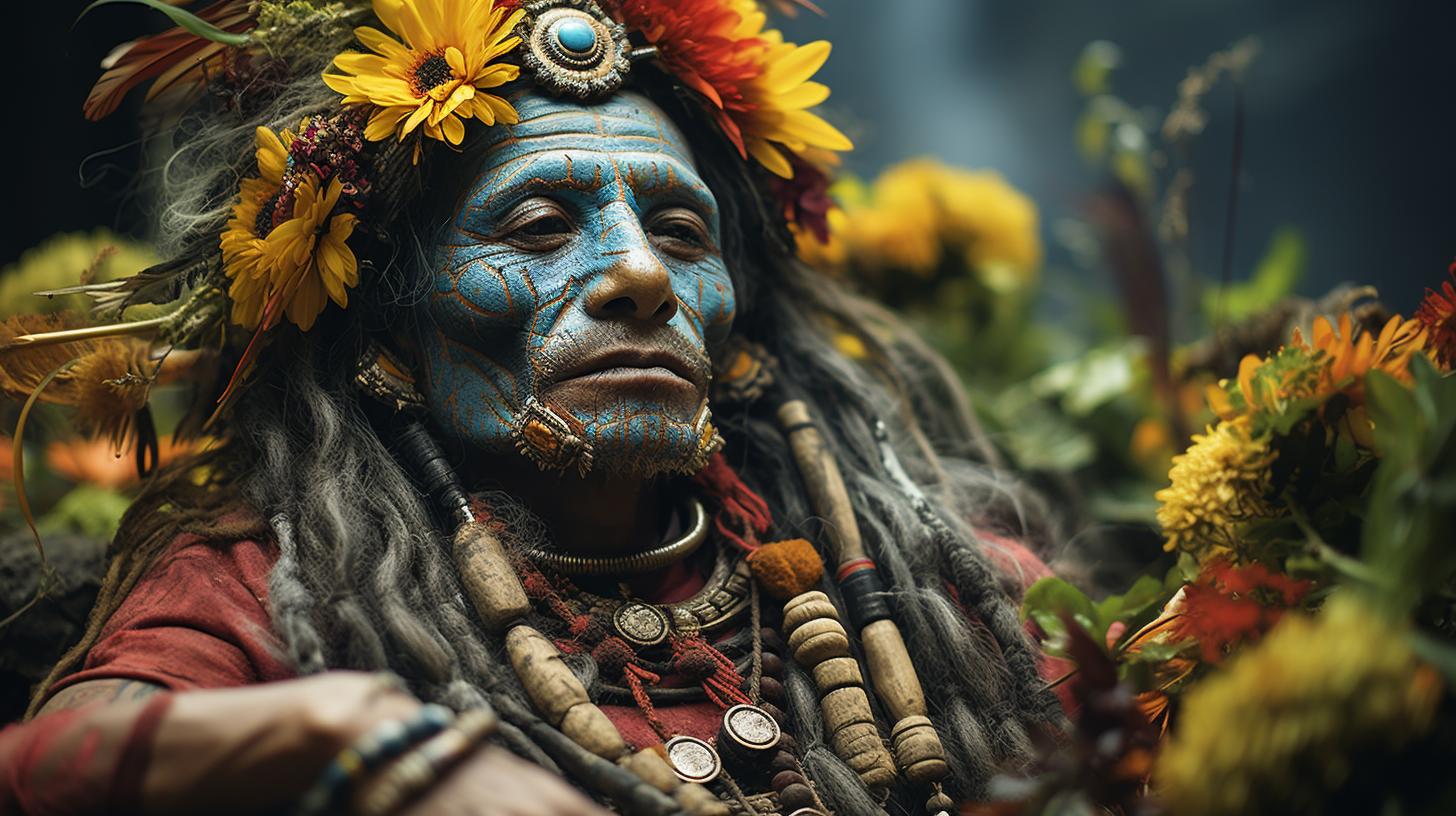
Farmers would make offerings and perform rituals to seek his blessings for abundant crops.
Overall, Sarapana occupied a central position in Inca society, serving as a healer, a spiritual guide, and a facilitator of balance and harmony within the community.
The people’s faith in his powers and the rituals dedicated to him underscore the significant role he played in the lives of the Inca people.
Sarapana’s Connection to Viracocha
Sarapana, the Inca god of healing, shares a significant connection with Viracocha, the Inca creator god. According to Inca mythology, Viracocha played a fundamental role in the creation of the universe, as well as the sun, moon, stars, time, and civilization itself.
He was revered as the ultimate deity and held a higher status than even Inti, the god of the sun, and Mama Killa, the goddess of the moon. This elevated position also extended to his relationship with Sarapana.
Legend has it that Viracocha appeared from Lake Titicaca during a period of darkness to bring light to the world. He disguised himself as a beggar to teach the foundations of civilization to his newly created beings.
It was during this time that Sarapana emerged as one of the gods associated with healing and medicine.
Although Sarapana’s specific origins may vary across different accounts, there is a belief that Viracocha bestowed upon him the power to heal diseases and provide physical and spiritual well-being.
This connection between Viracocha and Sarapana solidifies the importance of healing and medicine within Inca culture, emphasizing the reverence for maintaining balance and harmony in both the physical and spiritual realms.
Furthermore, Sarapana and Viracocha are intertwined in the Inca creation myth involving the Great Flood. It is said that Viracocha destroyed the people around Lake Titicaca with a cataclysmic flood, preserving only a select few individuals to spread civilization throughout the world.
In this narrative, Sarapana is often portrayed as the benefactor who aids Viracocha in this great task of carrying forth the Inca civilization.
Through their interconnectedness, Sarapana and Viracocha embody the Inca belief in a divine order where healing and creation are intrinsically linked.
The association between these two deities signifies the vital role that the pursuit of health and well-being played in Inca society, as well as the deep spiritual significance assigned to the act of healing.
Sarapana’s Relationship with other Inca Deities
Within the Inca pantheon, Sarapana held intricate relationships with various other deities. Each god represented different aspects of life and played unique roles in the Inca society. Understanding Sarapana’s connections to other deities allows us to grasp the complex web of beliefs and practices within Inca religion.
- Viracocha: Sarapana’s relationship with Viracocha, the supreme creator god, is of great significance. The Inca considered Viracocha as the creator of all things, including Sarapana himself. Sarapana was believed to be an emanation of Viracocha’s power, making their bond inseparable.
- Inti: As the god of the sun, Inti held a position of utmost importance in Inca cosmology.
Sarapana’s relationship with Inti was based on the interdependence of healing and solar energy. It was believed that by invoking Sarapana’s aid, one could harness the regenerative power of Inti for physical and spiritual healing.
- Mama Killa: Mama Killa, the mother moon goddess, also had a connection with Sarapana.
Both deities played vital roles in the agricultural cycle, with Sarapana ensuring the health of crops and Mama Killa regulating the fertility of the land. Their collaboration represented the interconnectedness of natural forces and the importance of balanced harmony to sustain life.
- Pachamama: Another deity intricately linked to Sarapana is Pachamama, the earth goddess and mother of all living beings.
Pachamama’s nurturing and protective nature complemented Sarapana’s healing powers. Together, they symbolized the cyclical relationship between life, health, and the earth’s abundance.
- Apus: Sarapana’s relationship with the Apus, the spirits of the mountains, was rooted in the belief that these majestic peaks controlled natural forces.
It was believed that by appeasing the Apus through rituals and offerings, Sarapana’s healing abilities would be enhanced, ensuring the well-being of individuals and communities.
In summary, Sarapana’s relationships with other Inca deities were multifaceted, representing the intricate interconnectedness of the natural and spiritual realms.
The collaboration between Sarapana, Viracocha, Inti, Mama Killa, Pachamama, and the Apus reinforced the Inca belief in the interdependence of divine forces and their influence on healing and the well-being of individuals and society.
Sarapana’s Temples and Sacred Sites
Sarapana, the revered Inca god of healing, was worshiped at various temples and sacred sites throughout the Inca empire. These locations served as centers of spiritual energy and places where devotees could seek blessings and healing from Sarapana.
One prominent temple dedicated to Sarapana was located near Cuzco, the capital of the Inca civilization. This temple, known as the Temple of Sarapana, was a grand structure adorned with intricate carvings and sacred symbols.
It was believed to be a powerful conduit for Sarapana’s healing energy.
Another important sacred site associated with Sarapana was situated in the Sacred Valley of Peru. This site, called Sarapana’s Sanctuary, was a serene and secluded place where people would make pilgrimages to seek divine intervention and healing.
It was believed that the natural surroundings enhanced the spiritual connection to Sarapana.
In addition to the established temples and sanctuaries, natural locations such as caves and waterfalls were also considered sacred to Sarapana.
These natural formations were believed to possess healing energies and were often visited by individuals seeking physical or spiritual healing.
- The Cave of Sarapana: Located deep within the mountains, this cave was believed to be a gateway to Sarapana’s realm.
It was believed that spending time in this cave would bring about healing and purification.
- The Waterfall of Sarapana: Situated in a lush rainforest, this majestic waterfall was considered a sacred place where Sarapana’s healing powers were believed to flow abundantly.
Bathing in its waters was thought to cleanse both the body and the spirit.
- The Healing Springs: Scattered throughout the Inca empire, natural springs were seen as sacred sources of Sarapana’s healing energy.
These springs were often visited by those seeking relief from ailments or rejuvenation.
Visiting these temples and sacred sites was an integral part of Inca religious practices. Pilgrims would bring offerings such as flowers, herbs, and special healing stones to honor Sarapana and seek his divine intervention.
Ritual ceremonies were conducted, involving prayers, chants, and purification rituals to establish a deeper connection with the god of healing.
The temples and sacred sites dedicated to Sarapana served as places of solace and hope for the Inca people.
They represented the belief in the power of healing and the divine influence of Sarapana in their lives. Even in modern times, the legacy of these sacred locations continues to inspire reverence for Sarapana and his healing abilities.
Rituals and Offerings to Honor Sarapana
Sarapana, the Inca god of healing, was revered through various rituals and offerings in ancient Peruvian society. These practices were designed to honor and seek the divine intervention of Sarapana for the restoration of health and well-being.
Here are some of the significant rituals and offerings associated with Sarapana:
- Healing Ceremonies: The Inca people believed in the power of rituals to activate Sarapana’s healing abilities.
Shamanic healers performed intricate ceremonies, often involving chanting, music, dance, and offerings, to connect with Sarapana’s divine energy. These ceremonies aimed to channel Sarapana’s healing powers to those in need.
- Herbal Offerings: Sarapana was strongly associated with the medicinal properties of plants and herbs. People would gather various healing herbs, such as coca leaves, muña, and matico, and offer them to Sarapana as a gesture of gratitude and a request for healing.
These offerings symbolized a deep connection between nature, spirituality, and the healing arts.
- Sacred Fires and Smoke: Fire held a sacred significance in Inca rituals. To honor Sarapana, people would light ceremonial fires and burn sacred resins, such as palo santo and copal, creating aromatic smoke.
This smoke was believed to carry prayers and offerings to Sarapana, seeking his benevolence and healing touch.
- Ritual Cleansing: Purification rituals played an essential role in healing ceremonies dedicated to Sarapana. Participants would often cleanse themselves through sweat baths or purifying herbal brews before engaging in the rituals.
These practices aimed to cleanse the body, mind, and spirit, allowing for a deeper connection with Sarapana’s divine energy.
- Offerings of Water: Water had profound symbolism in Inca culture, representing life, fertility, and cleansing. To honor Sarapana, people would offer water as a symbolic gesture of gratitude and reverence.
Clean, pure water was poured into ceremonial bowls or natural bodies of water, accompanied by prayers and requests for healing.
These rituals and offerings exemplify the profound veneration and belief in Sarapana’s healing powers among the Inca people. They provide insight into the spiritual practices that sought harmony between humans and the divine, with the ultimate goal of physical and spiritual well-being.
Legends and Stories about Sarapana
Throughout Inca mythology, Sarapana, the god of healing, was surrounded by intriguing legends and stories that showcased his immense power and compassion. These mythical tales provided insight into the origins and significance of Sarapana in Inca society.
One popular legend recounts the story of Sarapana’s encounter with a humble farmer who was plagued by a mysterious illness. The farmer, unable to find a cure, prayed to Sarapana for guidance and healing.
Moved by the farmer’s sincere plea, Sarapana appeared in a dream and revealed the secret herb that could cure the illness. The next morning, the farmer found the herb exactly where Sarapana had shown him in the dream.
Miraculously, the farmer’s health quickly improved after using the herb, solidifying Sarapana’s reputation as the deity of healing.
Another tale describes Sarapana’s role in a great battle between rival Inca tribes.
In the midst of the fierce conflict, the injured warriors called upon Sarapana for help and protection. It is said that Sarapana appeared in a blinding light, granting the warriors the ability to heal rapidly and fight with renewed strength.
The divine intervention of Sarapana ensured victory for the warriors and cemented his status as a powerful deity.
Sarapana’s stories often revolve around his ability to bring comfort and relief to those suffering from illnesses or ailments.
One legend tells the story of a young girl afflicted with a severe fever. Despite countless attempts to heal her, her condition continued to worsen. The girl’s desperate parents sought the aid of Sarapana, making an offering of sacred herbs and flowers.
Moved by their devotion, Sarapana appeared and whispered a healing incantation into the girl’s ear. Miraculously, the girl’s fever broke, and she made a miraculous recovery.
These captivating legends and stories about Sarapana highlight his esteemed position as a benevolent deity in Inca mythology.
They reinforce the belief in his ability to heal the sick and offer hope to those in need. By exploring and passing down these enchanting tales, the legacy of Sarapana remains alive in the hearts and minds of the modern Peruvian people.
Sarapana’s Impact on Inca Medicine and Healing Practices
Sarapana, the Inca god of healing, held a significant influence on the medicine and healing practices of the ancient Inca civilization. As the divine entity associated with the restoration of physical and spiritual well-being, Sarapana played a vital role in the Inca society’s approach to healthcare.
1. Integration of Spirituality and Medicine: The Inca people believed in the strong connection between the physical and spiritual realms. Sarapana represented this union, acting as a bridge between the two.
Inca healers and shamans incorporated spiritual rituals and offerings while addressing physical ailments, understanding that both aspects were integral to achieving holistic healing.
2. Herbal Medicine: Sarapana’s worship included the use of herbs and plants known for their medicinal properties.
Inca healers cultivated an extensive knowledge of these natural remedies and utilized them in their healing practices. These herbal medicines were believed to carry Sarapana’s divine healing power, assisting individuals in their journey towards recovery.
3. Rituals and Ceremonies: To invoke Sarapana’s healing powers, the Inca people performed various rituals and ceremonies. These practices involved chanting, drumming, and the burning of sacred herbs, creating an atmosphere conducive to healing.
The rituals were accompanied by prayers and offerings to Sarapana, seeking his intervention in curing illnesses and promoting well-being.
4. Spiritual Cleansing and Energy Balancing: Sarapana’s influence extended beyond physical healing.
Inca healers employed techniques for spiritual cleansing and energy balancing, aiming to restore harmony within individuals. These practices, which involved the use of sacred objects and the manipulation of energy fields, aligned with the belief in Sarapana’s ability to bring spiritual healing and rejuvenation.
5. Transmission of Healing Knowledge: The reverence for Sarapana also led to the preservation and transmission of the Inca’s extensive healing knowledge. Expert healers passed down their wisdom and skills to the next generation, ensuring the continuity of traditional healing practices.
Sarapana’s teachings were deeply ingrained in Inca medicine, fostering a lineage of healers dedicated to the well-being of their communities.
Sarapana’s profound impact on Inca medicine and healing practices persists to this day.
While the ancient Inca civilization may have faded, remnants of Sarapana’s influence can still be seen in traditional healing methods and beliefs among modern-day Peruvians, preserving a rich heritage of holistic well-being.
Sarapana in Modern Peruvian Culture
Sarapana, the Inca god of healing, continues to hold significance in modern-day Peruvian culture. Despite the passage of centuries, the reverence for Sarapana and his healing powers remains strong among the Peruvian people.
The traditions and beliefs associated with Sarapana have been passed down through generations, forming an integral part of the country’s cultural fabric.
In present-day Peru, Sarapana is venerated through various rituals and practices.
Many Peruvians visit sacred sites associated with Sarapana, such as ancient temples or natural healing springs, to seek his divine intervention in matters of health and well-being. These pilgrimages often involve offerings of medicinal herbs, flowers, or small tokens as a sign of devotion to Sarapana.
Throughout the year, Peruvians also celebrate festivals and ceremonies dedicated to Sarapana. These events serve as a means of expressing gratitude for his healing powers and seeking his ongoing blessings. Dancing, music, and traditional costumes are an integral part of these celebrations, creating a festive and vibrant atmosphere.
In addition to religious and ceremonial practices, Sarapana’s influence can also be seen in various aspects of Peruvian daily life. Traditional medicine systems, which incorporate herbal remedies and natural healing techniques, often draw inspiration from the Inca deity of healing.
Many Peruvians continue to rely on these ancient healing practices handed down from their ancestors, demonstrating the enduring legacy of Sarapana in the realm of healthcare.
Furthermore, Sarapana has found his way into contemporary Peruvian art and crafts.
Artisans and craftsmen frequently incorporate representations of Sarapana into their creations, whether through paintings, sculptures, or decorative objects. These artistic expressions serve as a way to honor and pay homage to the deity, keeping his presence alive in the artistic heritage of Peru.
In conclusion, Sarapana’s influence extends beyond ancient Inca civilization, as he continues to play a significant role in modern Peruvian culture. The people of Peru maintain a deep reverence for Sarapana and his healing powers, keeping their traditions and beliefs alive through various ceremonies, rituals, and artistic expressions.
Who is Sarapana?
Sarapana is an important deity in Inca mythology, specifically known as the god of healing and medicine. He possesses the power to cure illnesses and provide physical and spiritual healing to those in need.
What is the significance of Sarapana in Inca society?
Sarapana held a significant role in Inca society as the god of healing. His abilities were highly revered, and he was considered a crucial figure in the medical and spiritual practices of the Incas.
Sarapana’s influence extended beyond just physical healing, as he was believed to restore harmony and balance in individuals and within the community.
How does Sarapana connect to Viracocha?
Sarapana is closely associated with Viracocha, the creator god in Inca mythology. While Viracocha is responsible for the creation of the universe, Sarapana plays a pivotal role in maintaining and restoring health and well-being within that universe.
Does Sarapana have a relationship with other Inca deities?
Yes, Sarapana is part of a pantheon of Inca deities and holds particular connections with other gods and goddesses. While each deity has different domains, Sarapana often collaborates with them, emphasizing the importance of healing and well-being in various aspects of life.
Were there specific temples or sacred sites dedicated to Sarapana?
While there is limited information about specific temples exclusively dedicated to Sarapana, it is believed that he was honored in various sacred sites and ceremonial spaces throughout the Inca Empire. These places served as focal points for the veneration of Sarapana and the practice of healing rituals.
What rituals and offerings were made to honor Sarapana?
- Offerings of medicinal herbs and plants
- Burning of sacred incense and herbs
- Prayers and invocations for healing
These rituals were performed by priests and individuals seeking Sarapana’s intervention and healing powers.
Are there any legends or stories associated with Sarapana?
While specific stories or legends about Sarapana may be scarce, his significance as the god of healing is woven into the broader tapestry of Inca mythology. His role in restoring health and well-being is often mentioned in conjunction with other tales and myths of the Inca pantheon.
How did Sarapana impact Inca medicine and healing practices?
Sarapana played a vital role in influencing Inca medicine and healing practices. His guidance and power shaped the use of medicinal plants, spiritual rituals, and the overall understanding of the mind-body-spirit connection in maintaining well-being.
What is the relevance of Sarapana in modern Peruvian culture?
While Inca practices and beliefs have evolved over time, Sarapana continues to hold cultural significance in modern Peruvian society. His association with healing and holistic well-being remains important, with some Peruvians keeping his traditions alive through traditional medicine and healing practices.
.











